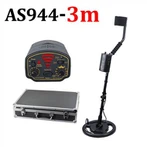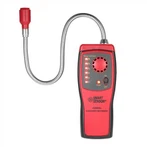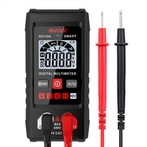Precautions when using the five-in-one gas detector
The five in one gas detector MP400S can support the detection of VOCs, combustible gases, oxygen, organic gases, carbon dioxide, and other toxic gases. Multiple sensors can be freely selected, and the optional Senbe Suite software provides users with a user-friendly and flexible wireless detection experience. It can continuously detect and provide decision-makers with faster response time and scientific decision-making, reducing unnecessary losses. The five in one gas detector MP400S has a built-in sampling pump. It can be widely applied in industries such as environmental protection, metallurgy, petroleum and petrochemical, chemical, fire protection, safety supervision, municipal, and sewage treatment.
In the selection of a five in one gas detector, many users may encounter confusion about which four gases the five in one gas detector is detecting? How to choose a gas detector? In fact, a five in one gas detector refers to a device that can detect five gases simultaneously. But which five gases are it specifically? Many non professional technical users will encounter confusion and difficulties in this selection process. Secondly, there are dozens or thousands of gases commonly detected, each with a different safety range. Specific selection of other special gases can also be based on their actual situation.
Precautions for using the five in one gas detector
1. The interference of gases on instrument detection. When detecting gas leaks, a single gas detector is usually used to detect a specific gas, but there is often more than just one gas in the detection environment. Therefore, attention should be paid to whether other gases will interfere with the instrument's detection and make the detection results inaccurate.
2. It is generally important to note that the service life of a five in one gas detection instrument varies depending on the type of gas detector used. When purchasing, it is important to inquire about the instrument's service life and ensure that it is used within its warranty period. Some companies, in order to save costs, use a detector for several years without replacing it, and the gas detection is only for show, ultimately leading to some gas leakage safety accidents.
3. Secondly, attention should be paid to the maintenance of the five in one gas detector. Like other equipment, the gas detector should also be regularly maintained, calibrated and tested irregularly, and stored in a lower temperature environment to extend its service life.
4. Before detection, it is important to note the concentration range detected by the gas detector. In addition to estimating the types of toxic and harmful gases based on experience, it is also necessary to roughly estimate the gas concentration. The gas detector should be set with an alarm value for detection. When the gas concentration exceeds the detection range of the instrument, the detector should be turned off. Prolonged use of the gas detector in an over range detection state can cause serious damage to the instrument.






